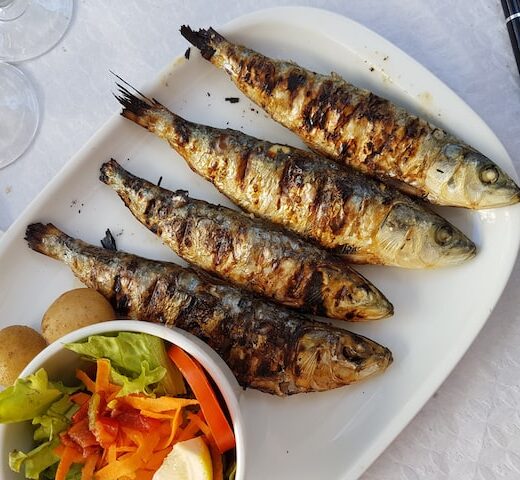There are lots of traditions celebrated in this country. If you missed the first part, read it here.

Sauerkraut
Regarding the sauerkraut, the Fall was also the peak of the cabbage harvest, which led to the shredding and pickling of tons of cabbage to make sauerkraut. If you’ve ever brined your sauerkraut, you know that fermentation can take six to eight weeks. A gastronomic match: sour and lean kraut is the perfect partner for rich, fatty, and salty pigs.
In addition, the long kraut slivers represent a long life. Although American paper money hasn’t always been green, there’s also the cabbage-green-money connection. Furthermore, any previous similarity to cash is already gone by the time kraut is placed on the table.

Silver Scales, Global Trade, and Migratory Flukes: Pickled Herring
The herring catch has historically been essential to the economic prosperity of merchants in the market cities of the Hanseatic League of the North Sea. Silver-scaled herring undoubtedly resemble money more than any other fish.
Atlantic herring continues to be a staple diet for many Europeans. It lends itself to pickling, fermentation, drying, and smoking for preservation and is rich in Omega-3 fatty acids. Particularly pickled herring is well-liked in Jewish, Scandinavian, Dutch, Nordic, Polish, and Baltic cuisines. The fish was referred to as “royal herring” by the Dutch poet Voost van den Vondel in the 17th century, not only for the sustenance it offered but also for the thriving international trade it fostered. A sizable percentage of European trade was driven by imported wood for shipping barrels, salt for preserving, and exports of pickled herring.

Herring’s irregular migration patterns are peculiar; waters that had abundant herring populations for years could suddenly have poor catches. There was always a risk that there wouldn’t be enough salt available to preserve the fish, even when herring was in plentiful supply. To ensure a prosperous fishing season, herring consumed on January 1st, was a customary celebration and a kind of prayer. The herring was so varied that it was regarded as a carrier of divine messages.”
Because herring has such diverse cultural importance, eating pickled herring for good luck is not specific to any area of the United States. On December 31, when it is customary to consume the fish at the stroke of midnight, however, locations with a significant Scandinavian population—such as the Norwegian and Swedish populations in Minnesota—will indulge in herring bonanzas.

Ancient Roman Coins and Italian-American Lentils
Lentil is the legume that appears in Greek and Roman literature the most frequently, according to Kimberly B. Flint-Hamilton in Legumes in Ancient Greece and Rome: Is it poison, food, or medicine? In the ancient Mediterranean, lentils were a prominent ingredient in meals, especially in lower-class homes. Lentils don’t immediately come to mind when I look at the money in my piggy bank, but if you think about how old Roman coins appeared—usually irregularly spherical and often with a brownish patina—the association between lentils and good fortune becomes much clearer.
Even today, families of Italian-American origin continue ringing in the New Year with various lentil meals throughout Italy (“It wouldn’t be New Year’s in Italy without lentils and sausage,” declared Mario Batali himself). Cotechino with lenticchie is one of them. Cotechino is a sizable pork sausage that, when cut into slices, takes on the appearance of a coin. Additionally, Brazil, Czechoslovakia, and Hungary have special lentil dishes for the New Year.



 from Pixabay
from PixabayGreens, black-eyed peas, ham and cornbread are usually the main ingredients in my New Year’s Day feast. These customs of eating particular foods remind us of our identities, past experiences, and aspirations for future well-being. It’s a great opportunity to catch up with people I missed during the previous holidays and to wish one another a prosperous and joyful new year as we begin the new calendar year.
Resolutions
Even though it may seem like it historically, promising to do something or making resolutions for the new year is an old habit that probably stretches back more than 4,000 years. According to historians, the Babylonians—one of the earliest civilizations to celebrate the year’s change—promised to settle their debts or return items they had taken. You can do it if they can. Do you need assistance setting your next year’s goal? Don’t be shy. Start out small and be consistent.

Leave a Reply